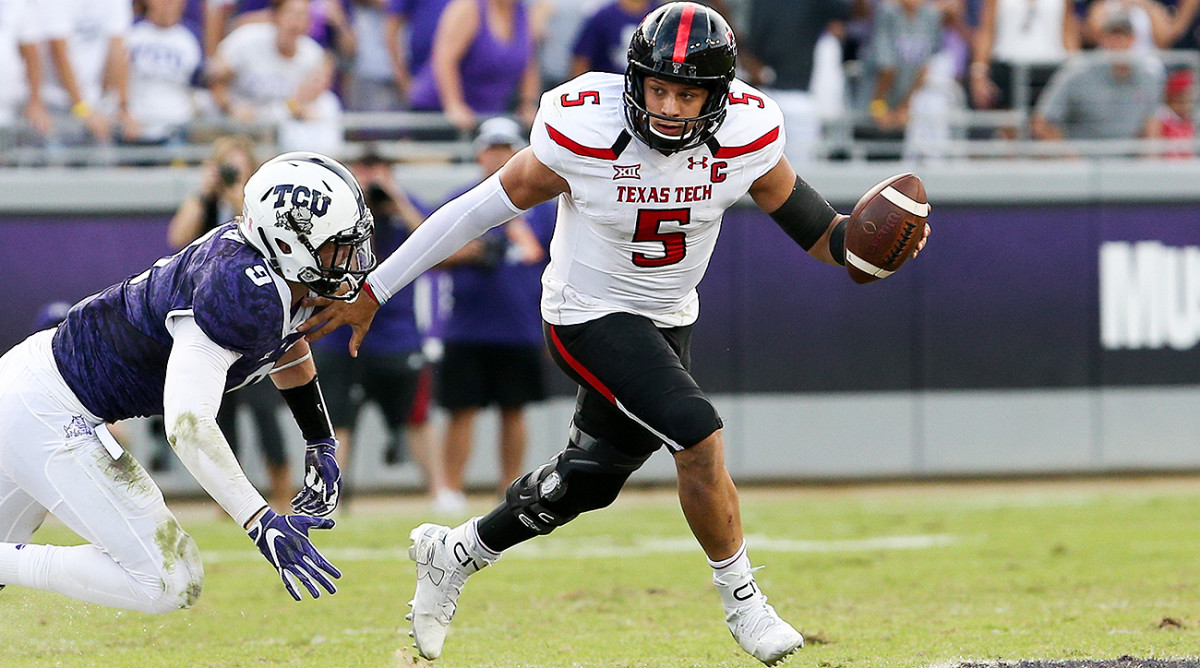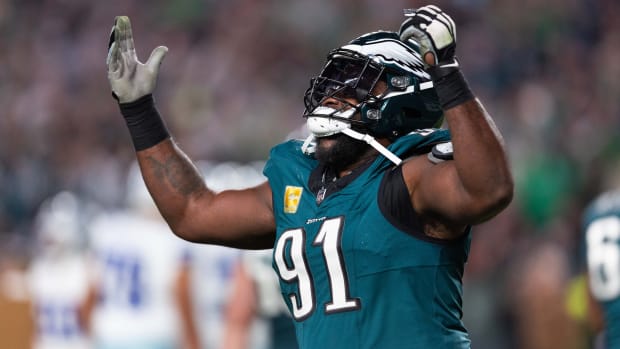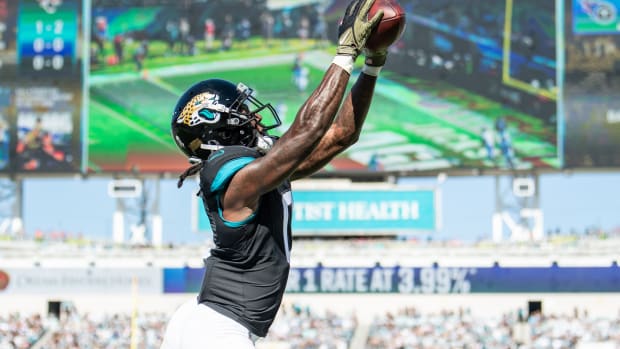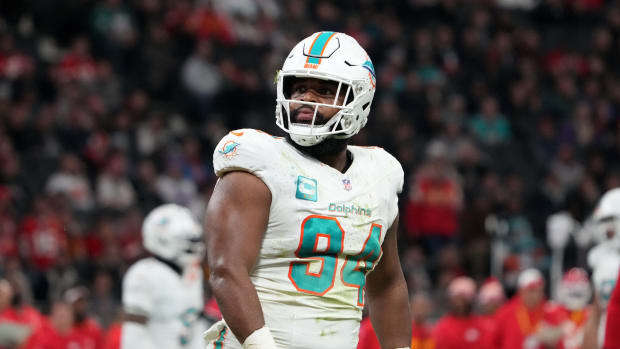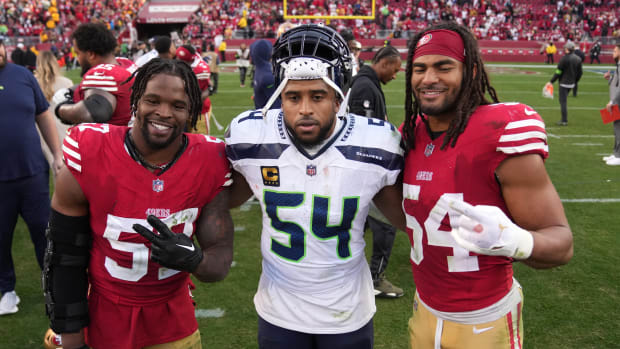2017 NFL draft prospect countdown, No. 26: Patrick Mahomes, QB, Texas Tech
What you need to know: How wild were Texas Tech’s games last season? On four separate occasions Mahomes threw for 500 or more yards ... and the Red Raiders were 1–3 in those games. That included an insane 66–59 loss to Oklahoma, in which Mahomes set the single-game FBS yardage record, with 819 (734 yards and five TDs on 52-of-88 passing; 85 yards rushing and two more TDs).
Mahomes finished the 2016 season with 5,052 passing yards, an average of 421 yards per game. He also threw 41 touchdowns and 10 interceptions, while rushing for another 12 scores. Mahomes accounted for 115 total touchdowns during his three-year Texas Tech career—99 of those trips to the end zone occurred in 2015 and ’16. He won the Sammy Baugh Trophy last season as the nation’s top passing QB.
The Draft’s Rorschach Test: What Will Each Team See in Patrick Mahomes?
Strengths: The Mahomes experience is a bit like watching someone slice a banana with a playing card—you’re not entirely sure how it happened, but it looks cool as hell. The Texas Tech product was a human highlight reel at the college level, consistently churning out big plays both with his arm and his legs.
Despite his mobility (and 22 career rushing touchdowns), Mahomes works to keep his eyes downfield in search of a throwing lane. While he obviously can scramble, he seemingly prefers to do so only as a last resort or if a clear gap opens.
It helps that he can drive the ball to all areas of the field, mechanics be damned. Mahomes has the arm to flick a sidearm toss on the run 50-plus yards, just as naturally as he can stand in the pocket and zip a bullet to the far sideline. There is a downside to his so-called “gunslinger” mentality, but there also are not a lot of quarterbacks that can make the throws he can.
The things he can do while on the move open the playbook up quite a bit. Mahomes can pressure defenses with his dual-threat potential outside the pocket, and his desire to find the home-run play downfield makes it so cornerbacks and safeties cannot really commit to him taking off, for fear that he’ll throw over the top.
Mahomes displayed a better understanding for defenses than he may be given credit for within Texas Tech’s spread system. Even during his combine throwing session, he made it a point to look off the imaginary safety, before turning to find his target.
“I just show them my knowledge for the game, that’s the only way I can prove it wrong,” said Mahomes of the “system QB” label. “You look back at the system quarterback [history], a lot of guys didn’t work out. So for me, it’s just going to be about proving those guys wrong, going out there and really showing my knowledge of the game and just competing. It’ll all show up when you get to the field.”
Weaknesses: All that said, Mahomes does indeed face the steep learning curve that comes with a transition from Texas Tech’s system to the NFL. He will have to adjust to working under center, at least on occasion, while digesting reads and coverages.
There should be a limit to how much his next team wants to clean up his mechanics—pushing Mahomes to be too bland would take away his improvisational skills. However, Mahomes’s mechanics can be scattershot, which is why he will thread a needle one play and then fire an easy pass into the third row the next.
On top of that, Mahomes offers the decision-making that comes with the gunslinger label. In other words, he will turn nothing plays into huge gains, but he’ll also try to strong-arm passes into nonexistent windows. His 2016 interception total of 10 could have easily been higher.
NFL player comparison: Matthew Stafford
































